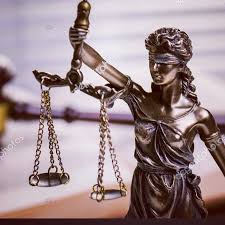Lawyer
Protection of cultural heritage during armed conflicts
In the context of armed conflicts in various regions of the world, the issue of protecting cultural heritage is becoming increasingly relevant. Wars and conflicts pose a huge threat to cultural monuments, which are an integral part of the history and identity of peoples. Destruction, looting and damage to cultural property have irreversible consequences not only for the present generation, but also for future generations. In this article, we will consider the main legal aspects of the protection of cultural heritage during armed conflicts, international legal instruments regulating this issue, as well as the problems of their implementation.
International legal instruments for the protection of cultural heritage
TheHague Convention of 1954. The most important international document in the field of protection of cultural property during armed conflicts is the 1954 Hague Convention for the Protection of Cultural Property in the Event of Armed Conflict. This document establishes general principles and procedures for the protection of cultural heritage. According to the Convention, States Parties are obliged to refrain from using cultural property and its surroundings for military purposes, as well as from any acts of vandalism or looting.
Additional Protocols to the Geneva Conventions of 1977. Additional Protocols I and II to the Geneva Conventions also contain provisions for the protection of cultural property. The Protocols prohibit any hostile acts directed against cultural heritage and provide for special measures to protect it.
TheRome Statute of the International Criminal Court of 1998. The Rome Statute establishes liability for war crimes, including the destruction of cultural heritage. The intentional destruction of cultural property is criminalized, which facilitates the prosecution of those responsible for such crimes.
Problems of implementation of international legal norms
Insufficient compliance by States Parties. One of the main problems in the field of cultural heritage protection is non-compliance by States Parties with the provisions of international treaties. Often during armed conflicts, the parties do not take into account the requirements of the Hague Convention and other international documents, which leads to the mass destruction of cultural property.
Lack of effective control mechanisms. Existing international organizations and control mechanisms are not always able to respond effectively to violations of international law in the field of cultural heritage protection. This is due to both political and financial constraints.
Problems of criminal prosecution. Bringing to justice those responsible for the destruction of cultural property also faces a number of problems. The International Criminal Court often has limited jurisdiction, and national courts are not always able or willing to prosecute.
Examples of destruction of cultural heritage during armed conflicts
Syria. The armed conflict in Syria has become one of the most tragic examples of the destruction of cultural heritage. The ancient city of Palmyra, a UNESCO World Heritage Site, has suffered significant destruction from the actions of the ISIS terrorist organization. Many ancient temples, arches and statues were destroyed or damaged.
Iraq. In Iraq, the destruction of cultural heritage occurred both during the 2003 war and during subsequent conflicts. One of the most famous cases was the looting of the National Museum of Iraq in Baghdad, where thousands of archaeological artifacts were stolen and damaged.
Mali. In 2012, during the conflict in Mali, Islamic extremists destroyed many mausoleums and mosques in the city of Timbuktu, which is also a UNESCO World Heritage Site. These actions provoked widespread international reaction and condemnation.
Possible ways to improve the protection of cultural heritage
Strengthening international cooperation. To effectively protect cultural heritage, it is necessary to strengthen international cooperation. States should join forces to prevent and respond to threats arising from armed conflicts.
Development ofnew control mechanisms. Existing control mechanisms need to be improved. More effective tools for monitoring and responding to violations of international law in the field of cultural heritage protection need to be created.
Increasingresponsibility for the destruction of cultural property. Strengthening accountability for war crimes related to the destruction of cultural property could be an important step in protecting cultural heritage. This involves both improving national legislation and strengthening the jurisdiction of international courts.
Conclusion.
The protection of cultural heritage during armed conflicts is an important task for the international community. Despite the existing legal norms and mechanisms, the effectiveness of their implementation often leaves much to be desired. In order to ensure the preservation of cultural property, it is necessary to strengthen international cooperation, improve control mechanisms, and increase responsibility for the destruction of cultural heritage. Only joint efforts can ensure the protection of cultural treasures for future generations.
In any legal situation, it is important to conduct a comprehensive legal analysis of the situation in order to obtain a clear understanding of its aspects and possible solutions; the legal conclusion on the situation should be based on a detailed study of the facts and application of the relevant legal provisions. To achieve the best results, it may be necessary to write a lawyer's request, writing a lawyer request will help to obtain the necessary information for further analysis.
Or, an analysis of the situation by a lawyer or attorney is a key step in formulating a legal strategy. Also, a legal analysis of the situation includes both a lawyer's opinion and an attorney's opinion, which provides a comprehensive approach to solving a legal problem. A written legal consultation or written legal advice helps the client to understand the legal aspects and possible consequences of various options.
In today's environment, legal advice online and legal consultation online are becoming especially relevant, as they provide access to legal assistance regardless of the client's location. And online consultation of a lawyer and written consultation of a lawyer allow you to quickly get the necessary information and support in legal matters.
Thus, a legal analysis of the situation by professional lawyers and attorneys is the key to a successful solution to any legal problem. A legal opinion and timely legal assistance help to protect the rights and interests of the client, ensuring effective resolution of complex legal issues. Contact the legal marketplace "CONSULTANT"! A lawyer is always there for you!




































